The choice of dale for which to explore can be an agonising process of thought. So many are the valleys and the season is so short indecision can drive you mad ! However, there is a dale that I can gladly commend, one particularly qualified for your very first floral frolic. Measure for measure and plant for plant Monk’s Dale’s got the lot ! For a start, its list of habitats reads like an inventory of a temperate Eden: woodland, scrubland, grassland, marshland, springs, a winterbourne stream; even an extensive body of standing water; dry, sunny slopes, damp, shady slopes; and not forgetting scree. The aphorism generally applied, that the greatest variety of habitats equates to the greatest variety of species is well evinced here. Indeed, Monk’s Dale’s patent virtues are more than enough to enrich the minds of the novice floraphile to the botanical luminary.
So, then, where is it ? Monk’s Dale lies 11 kilometres east of Buxton town centre, approximately 400 metres due north of Miller’s Dale Station where there is a cafe, toilets, and a capacious pay-and-display car park. The station car park and its facilities are located at the southern end of Wormhill Road. For those of you who use satellite navigation systems its full address is: Peak District National Park Authority, Miller’s Dale, B6049, High Peak, SK17 8SN. Pedestrian access into the dale is over a wall stile just to the right of the hair-pin bend on Wormhill Road, 150 metres north-east of the entrance to the station car park. The location of the stile is further landmarked by the black-and-white facade of Glebe Farm, and the fact that directly next to the stile is a road sign that reads, confusingly, ‘Miller’s Dale’ !
Commence your floral frolic in the latter days of April when the mountain currant bushes will be displaying their full blossom. This otherwise unprepossessing woody species produces erect racemes from the tips of their wiry stems, which when witnessed en masse resemble thousands upon thousands of tiny amber-yellow candelabras. Mountain currant has an obdurately lounging habit. Here, it can be seen in the extreme south-western corner of the reserve draping itself over the crags and cliffs above and behind Miller’s Dale’s St. Anne’s church, not a stone’s throw away from the stile. A rare native shrub described as nationally scarce, yet in spite of its allocated status, so prolific are the individual specimens that comprise Monk’s Dale’s impenetrably compact colony that a nearby landowner has been obliged to trim its straggly overgrowth into a hedge
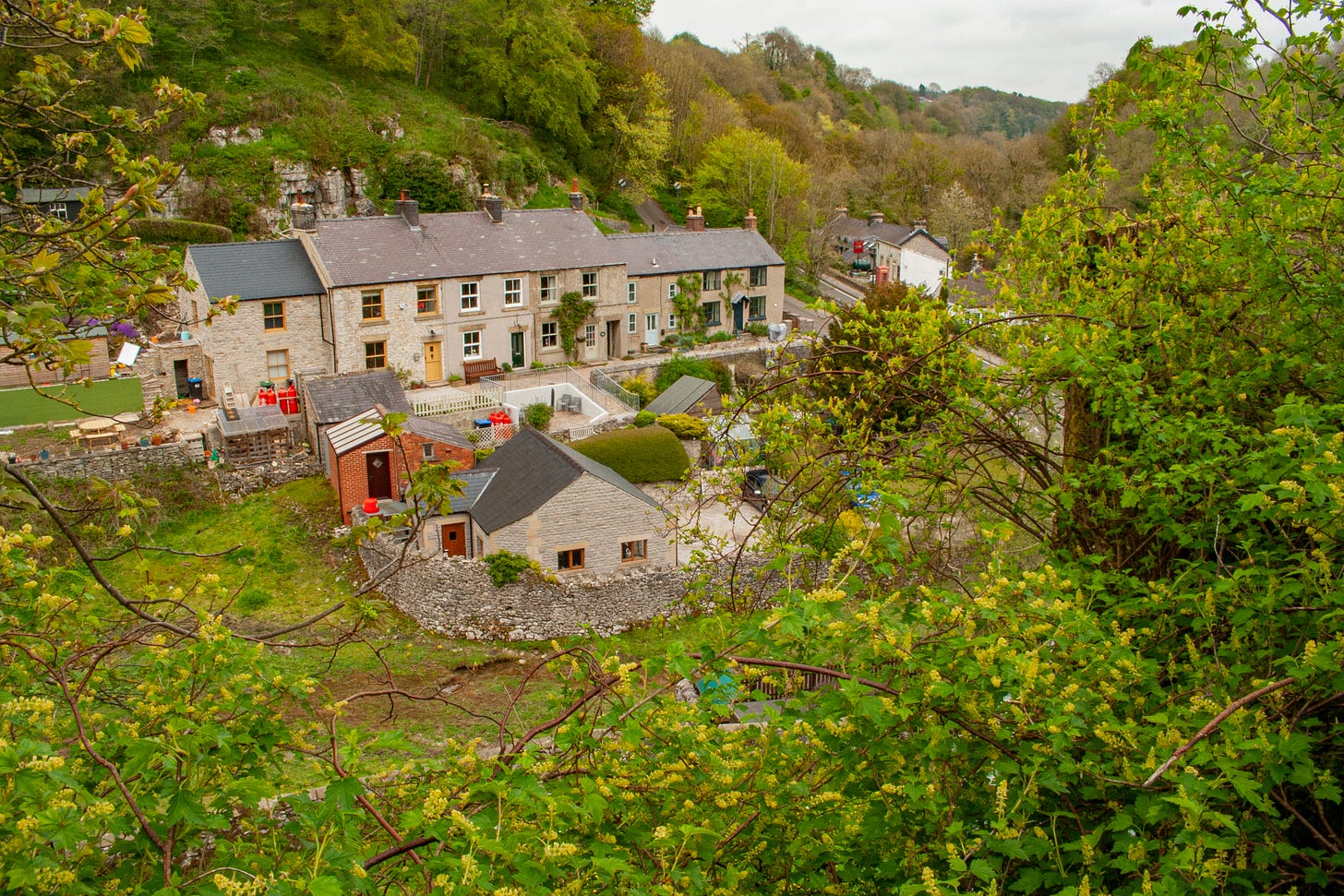
But, it’s the period of late May through to July which is most propitious when after no fewer than a handful of strides the valley greets the visitor by rolling out a rug of mouse-ear hawkweed, biting stonecrop, pignut and black medick, lady’s bedstraw and wild thyme on the dry, sun-baked banking between the chapel and the stile, establishing the standard of what to expect up ahead.
Through an umbriferous scrub, the home of, among many herbs, a bouquet of blue aquilegia, the footpath descends to a simple timber bridge that spans a wide though shallow stream. The water here has transformed its course into a series of nebulous terraces, some big, some small, separated by miniature weirs made by debris gathered in spate. Rich in minerals it carries in solution, the water has ‘petrified’ everything it’s touched, that is to say that it has encrusted the miniature weirs and the debris, the floor of the stream and its sides, even overhanging vegetation with a crystalline deposit, probably calcium carbonate or calcium sulphate, of a mottled hue of sandy grey. The entire ground over which the stream flows appears washed with muddy cement.
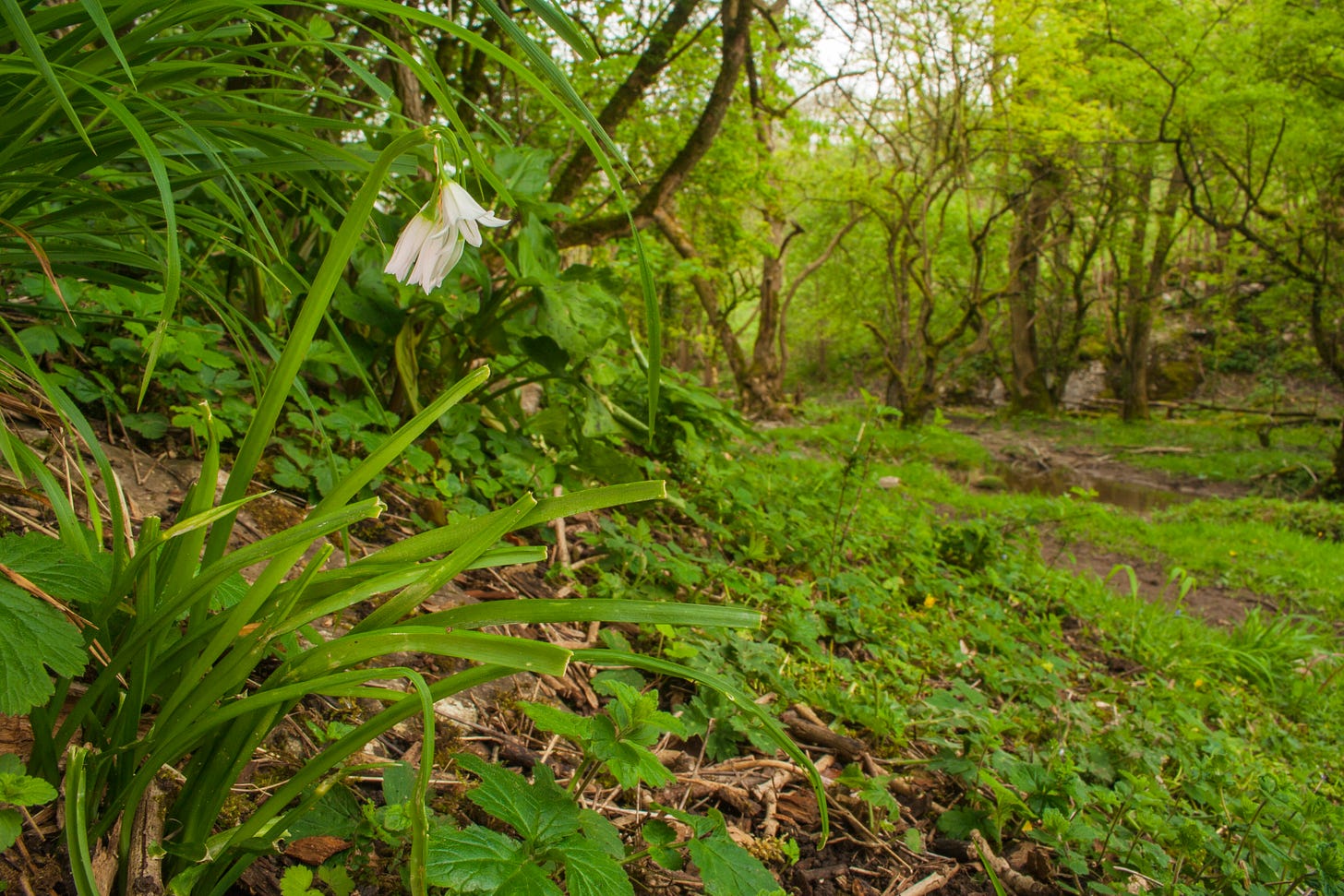
Companioning this stream north-west it isn’t long before we encounter a real weir. Between it and the bridge, contiguous to the path, is the only known location in the whole of the Derbyshire Dales of a plant called three-cornered leek. A pretty member of the allium family producing its usual lead-white umbels (providing cattle don’t decimate it first !), how it came to be present in Monk’s Dale is still a conundrum unresolved, no less so because its indigenous abode is the Mediterranean basin ! One species certainly native is marsh marigold. In Monk’s Dale’s southern and central zones its familiar yellow blooms adorn the sides of the stream like twin braids of gold woven into the hem of nature’s skirts.
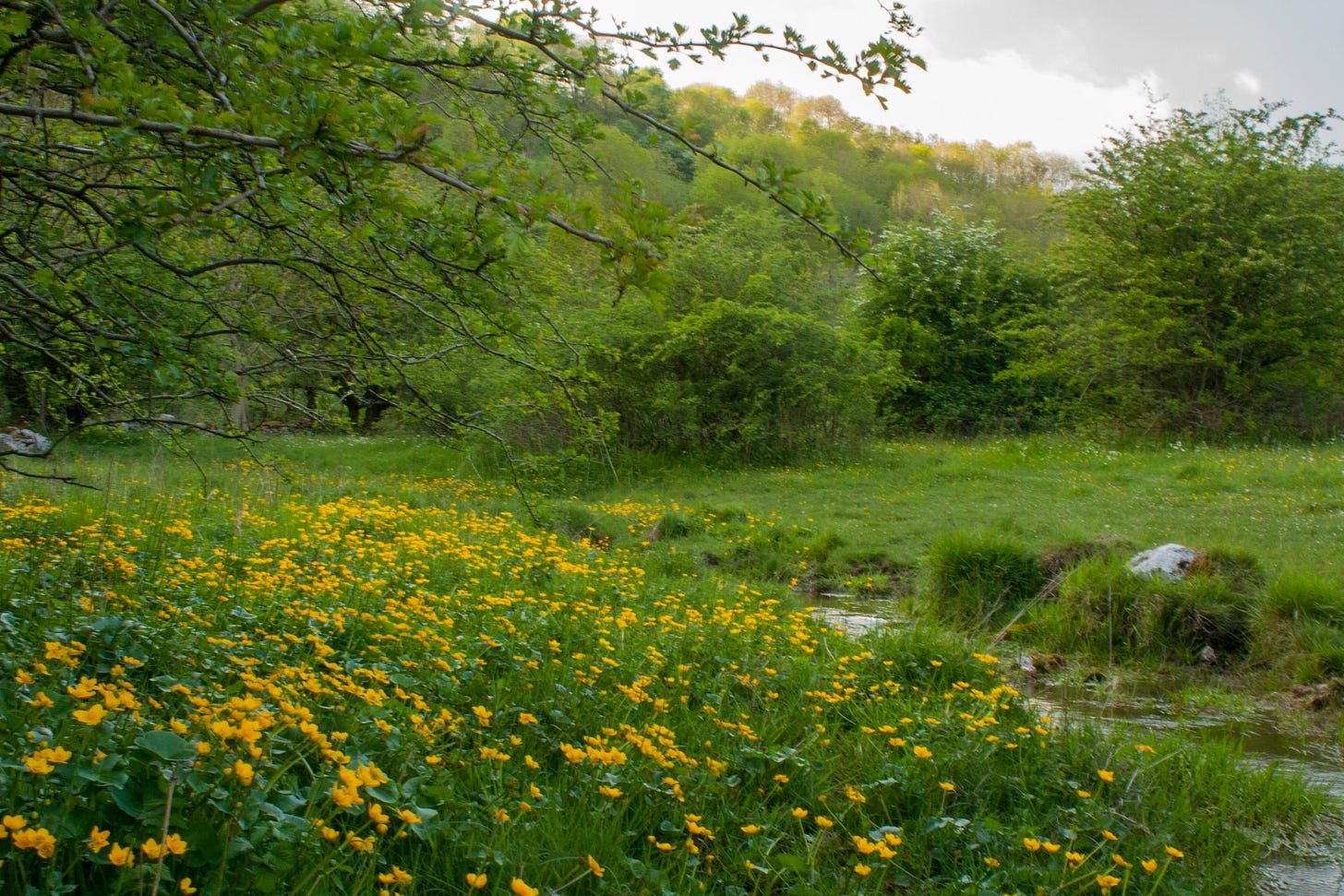
From the wide flood plain of the weir we follow the water upstream. To the right are the valley’s rock-strewn slopes, their broad sculptured shoulders soak up the sun, facing south first then west. Botanically rich they beg to be explored although, paradoxically, it is a flowerless plant that may be of greater interest. Monk’s Dale’s desiccated screes support the elegantly delicate limestone fern. So abundant are their colonies in this valley, regardless of their national scarcity, that the guest would be forgiven for questioning their status !
If choosing to visit in June, the rainbow patchwork of rockrose, pignut, limestone bedstraw and thyme that spread extensive blankets over the parched slopes of the west-facing aspect is truly an exhilarating sight to behold, whilst the dry glades opposite are full of ox-eye daisy and the pinks and whites of wild rose. No relation to the latter are the two superb examples of guelder rose shrubs exhibiting their hydrangea-like snow flake flowers not far from the banks of the stream.
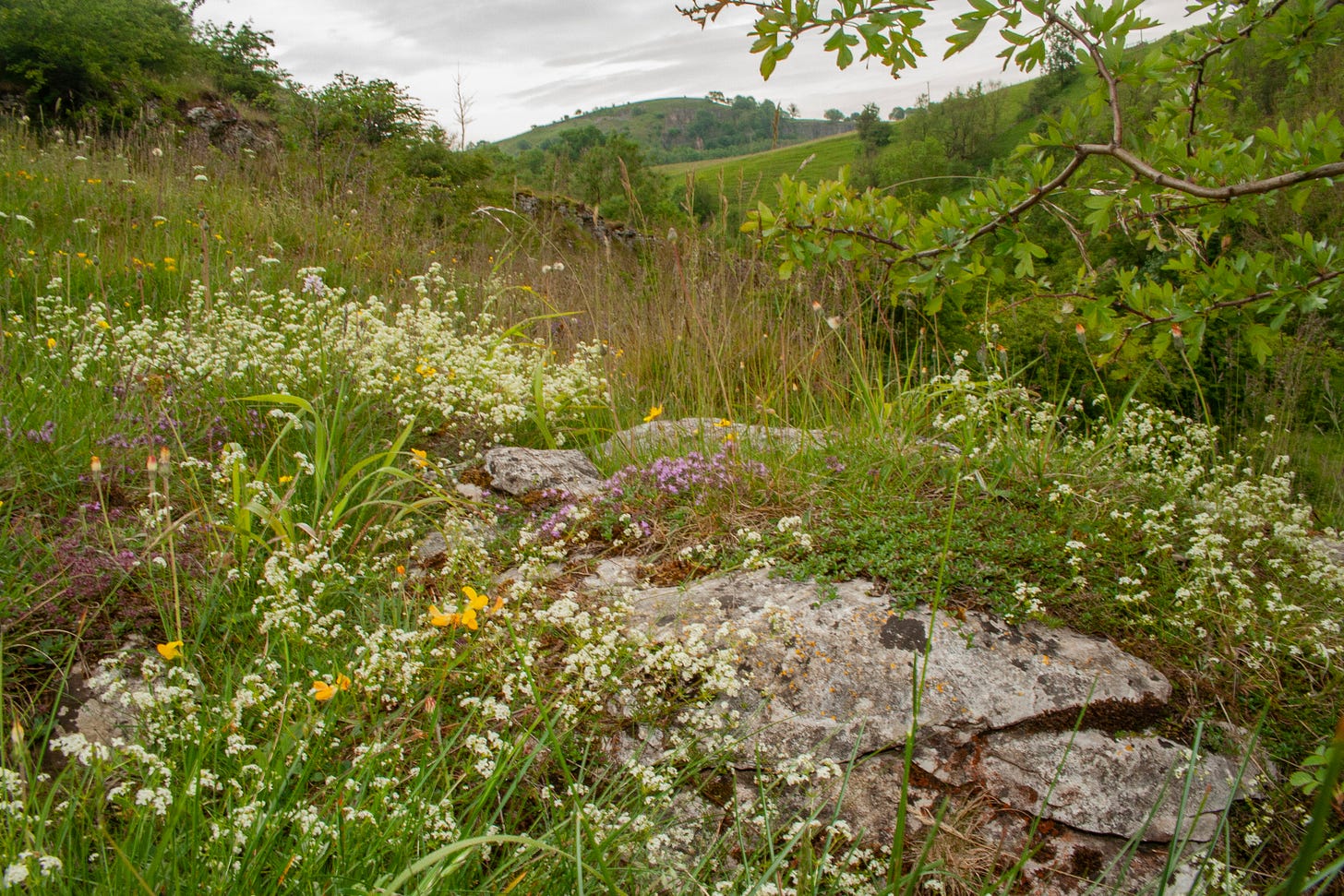
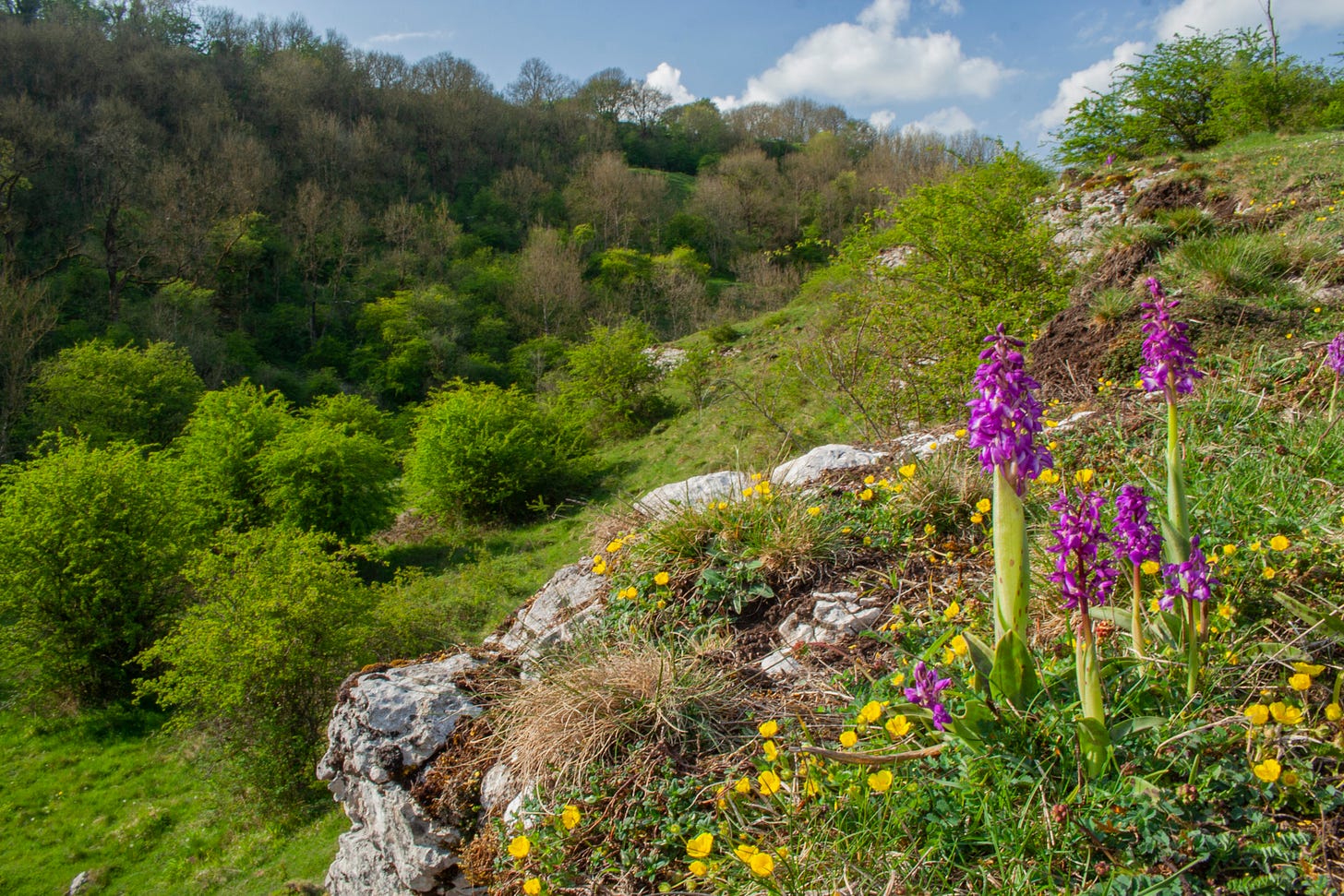
Approximately two hundred metres north-west from the weir is a place that teems with glorious interest. If you have arrived at a bend in the trail where the zone of the stream appears boggy and there is a cliff to your right about the height of a modest house, you have arrived at Monk’s Dale Springs. On the stream’s miry islands thrive a very special assortment of species: both the stunningly adorable southern and northern marsh orchids occur at this site interspersed by the presence of a bizarre little plant with pale blue flowers redolent of violets on long, fragile stalks. This is common butterwort, one of Britains few insectiferous species - yes, it really does ‘eat’ flies ! Their prostrate leaf rosettes which are not unlike bright, greenish-yellow stars, exude a sticky film that traps and digests minute winged insects.
Common butterwort is not really so common in the Derbyshire Dales. Conversely, spring cinquefoil, yet another species in Monk’s Dale classified as nationally scarce, is scarcely so numerous as in the White Peak ! Spring cinquefoil manifests itself in customary style as fragmentary pelmets of brilliant yellow blossom on the brims of the weatherbeaten crags and cliffs, especially the one to the right of Monk’s Dale Springs. Attending the cinquefoils are exemplary specimens of early purple orchids creating a colour scheme that is unforgettably vibrant. Not as fussy as to where they flourish, the early purple orchids of Monk’s Dale can be found in an equal state of health whether it be darkest shade or sunniest slope.
Our journey through Monk’s Dale’s southern zone transitions all too soon into a canopy of deciduous trees (see Floral Frolics Down The Derbyshire Dales: Monk’s Dale Wood). This valley possesses much, much more than what the brevity of this frolic will permit. Nevertheless, the pleasures of your own discoveries and the ambit of your own knowledge will only ever be attained in Monk’s Dale, as in every dale, through regular pilgrimage.
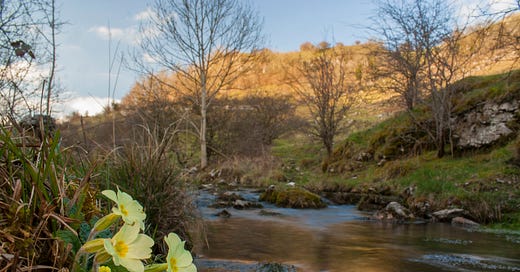



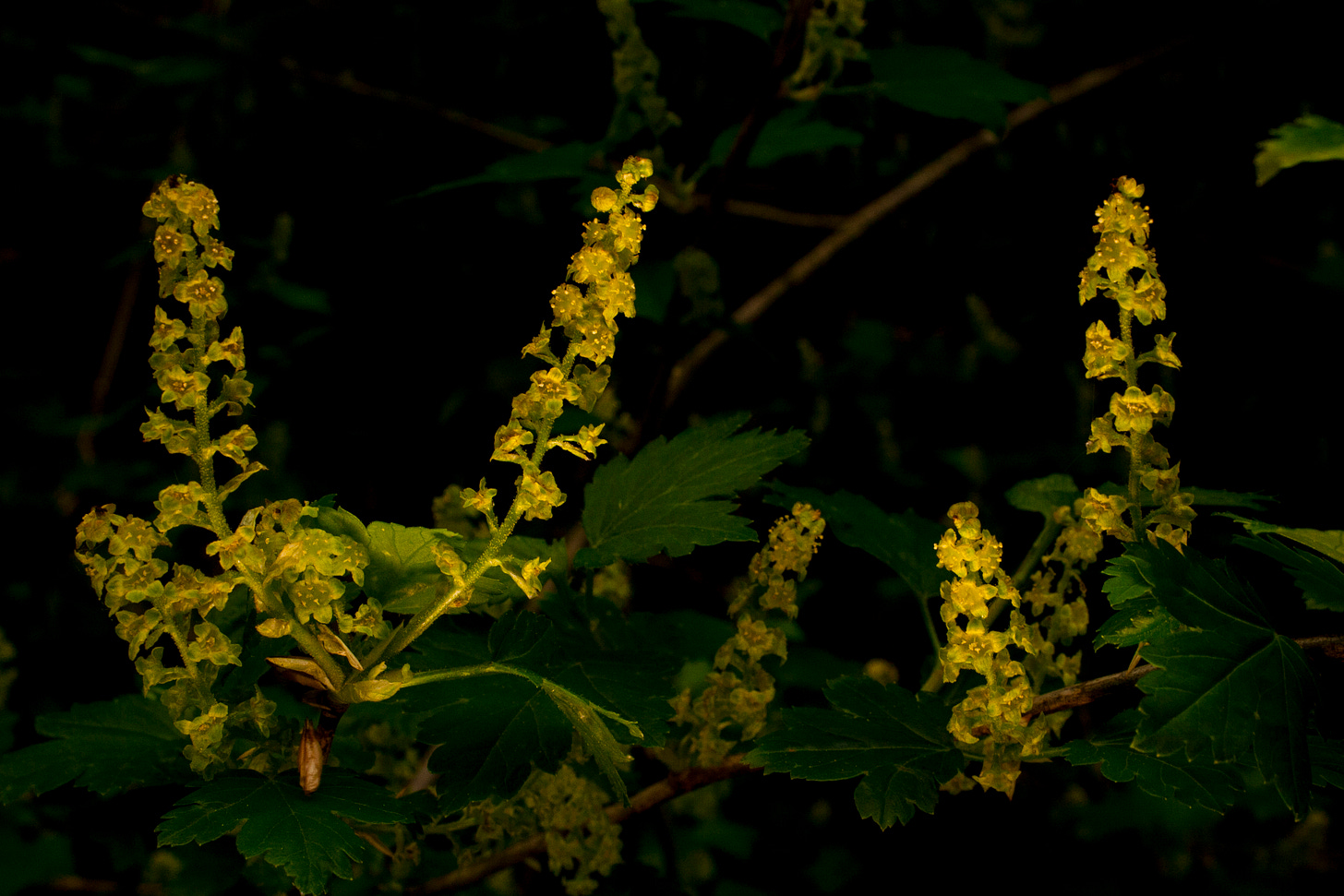
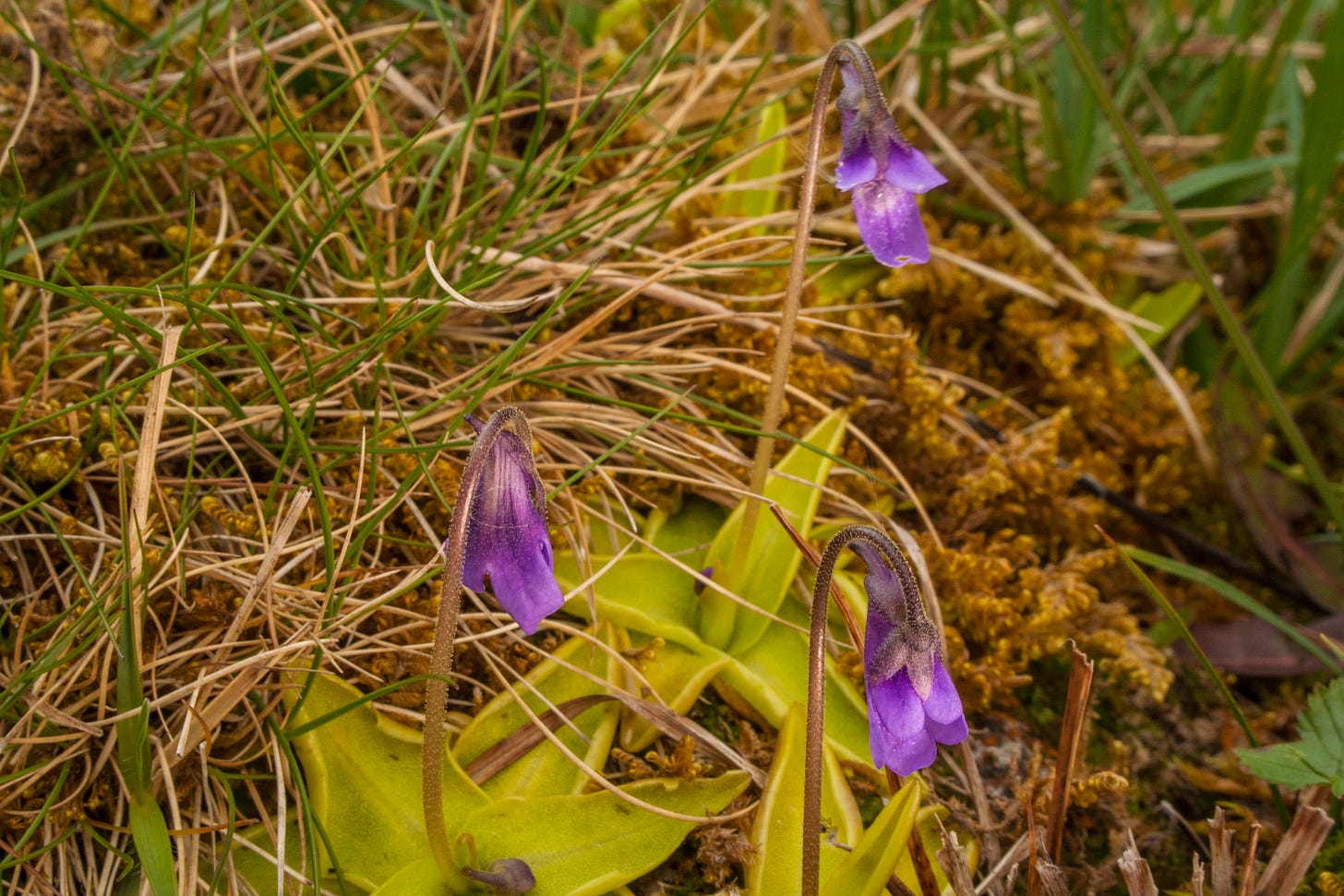
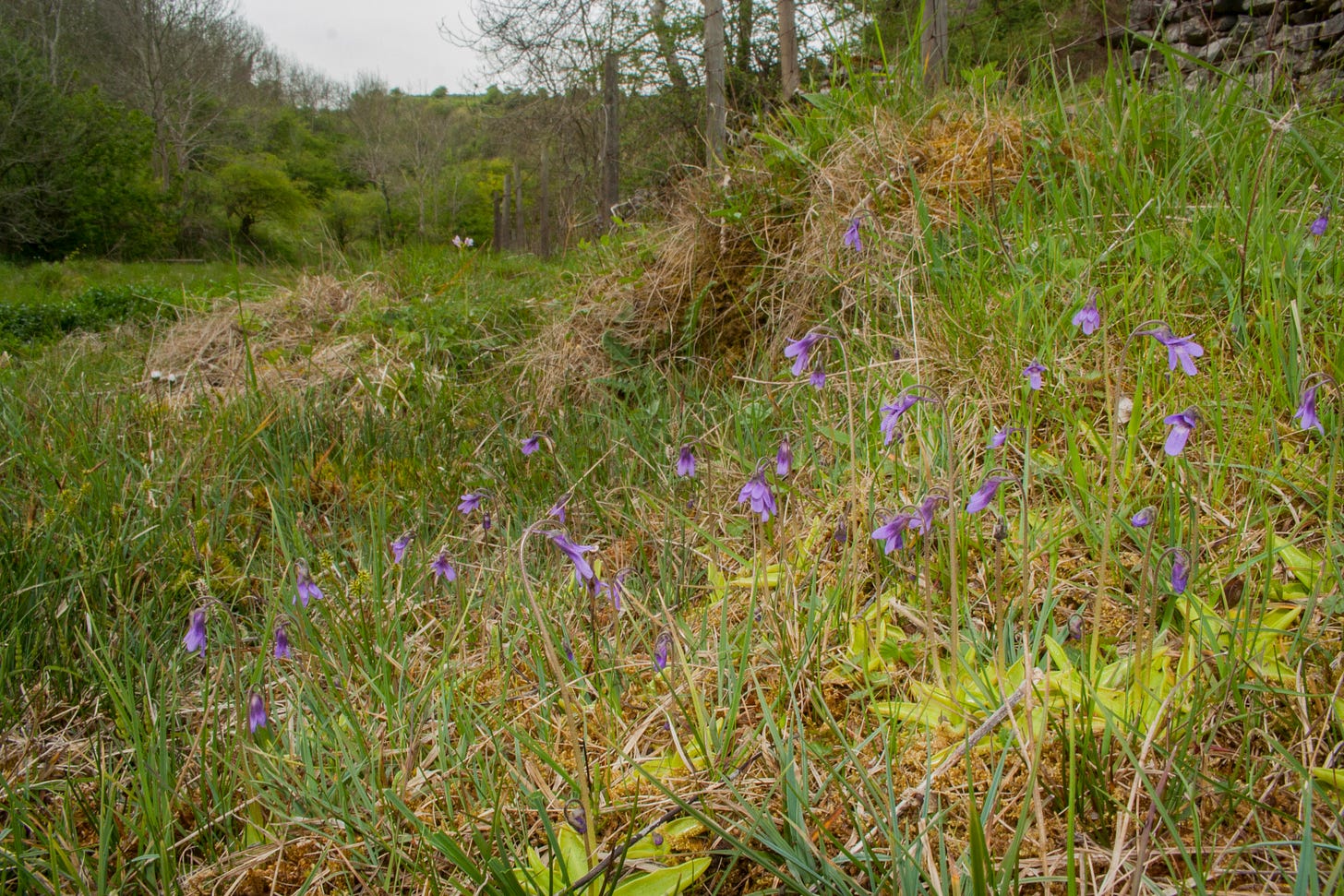
I'm a little confused as to the route you're describing. It seems to set out northwards (out of Millers Dale village and into Monks Dale) as I'd expect, but suddenly arrives at Wormhill Springs, which are in Chee Dale, on the River Wye, a mile west of Millers Dale. Are we talking about the same Wormhill Springs (approx. SK123734)?